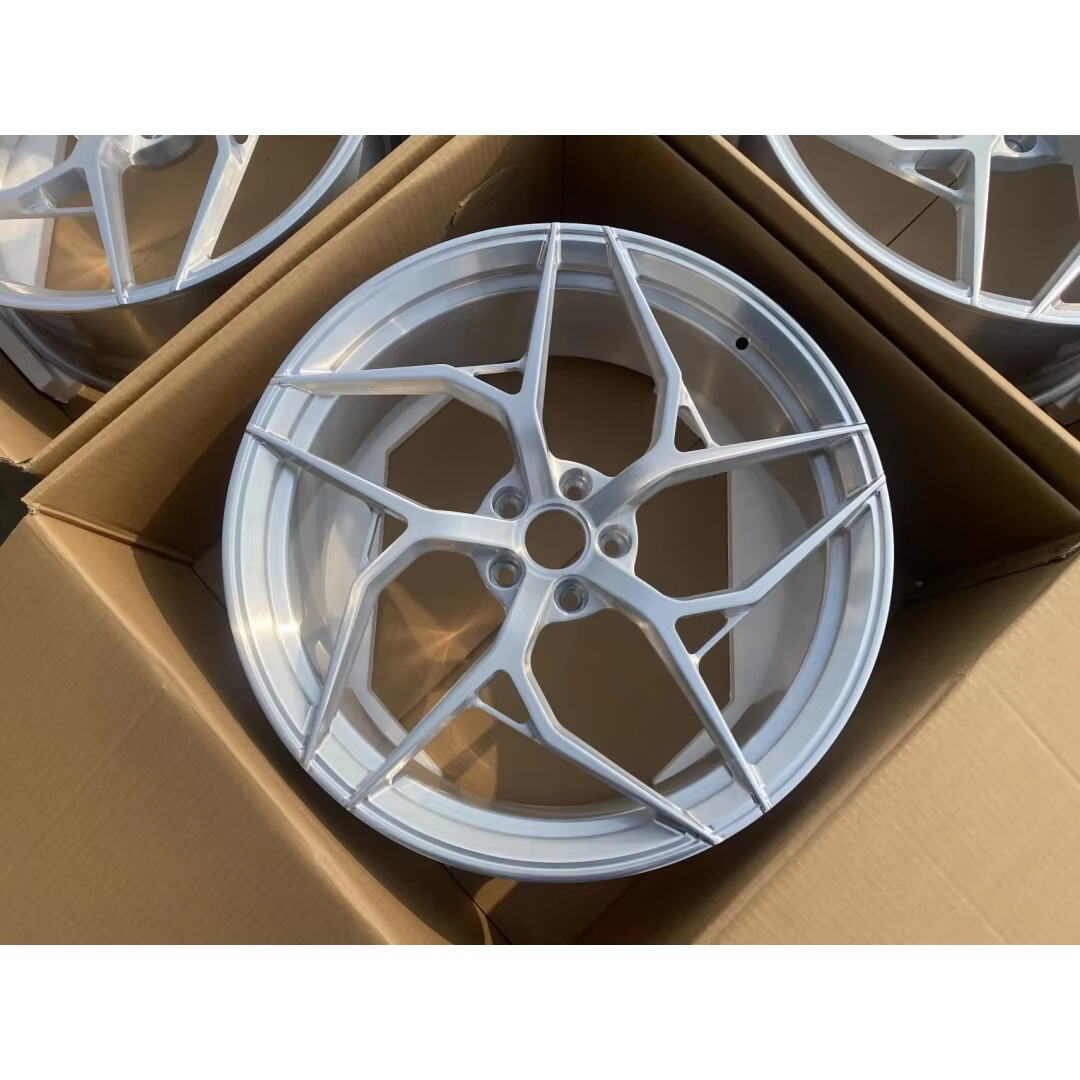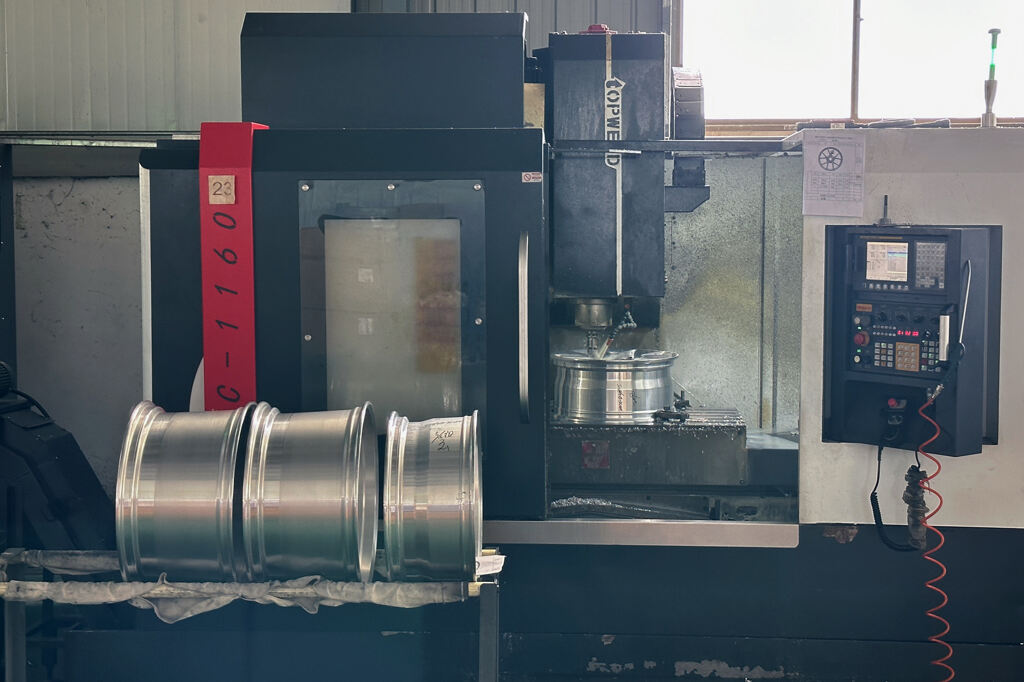How 3 Piece Forged Wheels Enhance Custom Fitment for Premium Car Projects
Premium automotive enthusiasts understand that achieving the perfect custom fitment requires more than just selecting attractive wheels. The foundation of any exceptional vehicle transformation lies in choosing components that offer both aesthetic appeal and functional superiority. Among the various wheel construction methods available today, three-piece forged technology stands as the pinnacle of engineering excellence, providing unmatched customization capabilities for discerning car owners who demand nothing less than perfection in their builds.
The automotive aftermarket has witnessed a significant shift toward personalization and performance optimization over the past decade. Vehicle owners increasingly seek components that reflect their individual style while enhancing their car's capabilities. This trend has elevated the importance of wheel selection, as these components serve as both functional necessities and prominent design elements that define a vehicle's overall character.
Understanding the technical advantages and customization potential of advanced wheel construction methods becomes crucial for anyone embarking on a serious automotive project. The investment in premium components pays dividends through improved performance, enhanced aesthetics, and long-term durability that standard alternatives simply cannot match.
Advanced Construction Technology
Forging Process Excellence
The forging process represents the most sophisticated method of wheel manufacturing, utilizing extreme pressure and heat to compress aluminum alloy into dense, grain-refined structures. This manufacturing technique creates wheels that exhibit superior strength-to-weight ratios compared to cast alternatives, resulting in components that can withstand the demanding forces encountered during spirited driving and track use.
Modern forging facilities employ computer-controlled hydraulic presses capable of generating thousands of tons of pressure, ensuring consistent material properties throughout each wheel. The controlled compression eliminates porosity and creates a uniform grain structure that enhances both mechanical properties and visual appeal when properly finished.
Temperature control during the forging process plays a critical role in achieving optimal material characteristics. Precise heating cycles allow the aluminum alloy to reach its ideal plasticity state, enabling the formation of complex geometries while maintaining structural integrity throughout the entire component.
Three-Piece Assembly Innovation
The three-piece design philosophy separates wheel construction into distinct components: the center section, outer barrel, and inner barrel. This modular approach enables unprecedented customization possibilities while maintaining the structural advantages of forged construction throughout each individual piece.
Assembly techniques for three-piece wheels involve precision-machined interfaces and specialized fastening systems that ensure perfect alignment and long-term reliability. High-grade titanium or stainless steel hardware provides corrosion resistance and maintains clamping force under varying thermal conditions.
Quality control measures during assembly include torque specifications, thread engagement verification, and dimensional accuracy checks that guarantee each wheel meets exacting standards for both performance and safety applications.
Custom Fitment Advantages
Dimensional Flexibility
One of the most significant benefits of 3 piece forged wheels lies in their ability to accommodate virtually any desired fitment specification. Unlike single-piece alternatives that require expensive tooling changes for different sizes, the modular construction allows manufacturers to create custom combinations using existing barrel sections and center designs.
Width adjustments become straightforward through barrel section selection, enabling wheel widths ranging from conservative factory specifications to aggressive wide-body applications. This flexibility proves invaluable for custom builds where specific track measurements and offset requirements must be met without compromising aesthetic proportions.
Offset modifications represent another area where three-piece construction excels, as center section positioning within the barrel assembly can be precisely calculated to achieve target specifications. This capability eliminates the guesswork often associated with aftermarket wheel selection and ensures proper suspension geometry maintenance.
Bolt Pattern Adaptability
The independent center section design enables adaptation to multiple bolt patterns without requiring completely new wheel designs. Manufacturers can produce center sections with various PCD measurements while utilizing the same outer components, reducing production costs and lead times for custom applications.
Hub bore specifications receive similar treatment, with center sections machined to accommodate specific vehicle requirements while maintaining structural integrity. This approach proves particularly valuable for enthusiasts working with multiple vehicle platforms or planning future modifications that might require different mounting specifications.
Installation considerations benefit from the precise fitment capabilities inherent in three-piece designs, as proper hub-centric mounting becomes achievable across diverse vehicle applications without requiring additional adapter hardware that might compromise performance or safety.
Performance Enhancement Features
Weight Distribution Optimization
The three-piece forged construction methodology enables engineers to optimize material distribution throughout each wheel component, placing strength where needed while minimizing weight in non-critical areas. This targeted approach results in wheels that often weigh less than their single-piece counterparts while maintaining superior structural properties.
Rotational inertia reduction represents a key performance benefit, as the optimized weight distribution decreases the energy required for acceleration and deceleration. This improvement translates into enhanced throttle response, improved braking performance, and reduced stress on drivetrain components during spirited driving conditions.
Unsprung weight reduction contributes to improved suspension performance by allowing dampers and springs to control wheel movement more effectively. The reduced mass enables suspension components to respond more quickly to road surface irregularities, resulting in enhanced ride quality and improved tire contact patch consistency.

Thermal Management Properties
Forged aluminum construction provides excellent thermal conductivity properties that help dissipate heat generated during braking operations. The three-piece design further enhances this characteristic by creating additional surface area for heat transfer while maintaining structural continuity throughout the assembly.
Brake system compatibility improves through the enhanced cooling characteristics, as reduced wheel temperatures contribute to more consistent brake pad and rotor performance during extended driving sessions. This thermal stability proves particularly valuable for track-oriented applications where sustained high-performance operation is required.
Temperature cycling resistance ensures long-term dimensional stability, as the forged construction and quality assembly techniques prevent loosening or distortion that might occur with inferior manufacturing methods under thermal stress conditions.
Aesthetic Customization Options
Surface Finishing Techniques
The dense, uniform grain structure achieved through forging creates an ideal foundation for various finishing techniques that enhance both appearance and durability. Machine finishing capabilities include precision face cutting, intricate spoke detailing, and complex geometric patterns that would be impossible to achieve with cast construction methods.
Powder coating applications benefit from the smooth, non-porous surface characteristics of forged components, resulting in superior adhesion and finish durability. The three-piece construction allows for different finishing treatments on each component, creating unique visual effects through contrasting colors or textures.
Polishing and brushing techniques produce exceptional results on forged surfaces, as the uniform material structure eliminates the inconsistencies often found in cast alternatives. These finishing methods can highlight the precision manufacturing quality while creating distinctive appearances that complement specific vehicle themes.
Design Element Integration
The modular nature of three-piece construction enables integration of design elements that would be structurally challenging or impossible with single-piece alternatives. Center sections can incorporate complex spoke geometries, logo integration, or custom mounting provisions without compromising the structural integrity of the barrel sections.
Color coordination possibilities expand significantly through the ability to finish each component independently, allowing for sophisticated color schemes that complement vehicle paint, interior elements, or brake caliper finishes. This level of customization enables truly unique wheel designs that reflect individual preferences.
Hardware selection contributes to the overall aesthetic impact, with options ranging from subtle titanium bolts to colored anodized fasteners that serve as design accents while maintaining functional excellence throughout the assembly.
Installation and Maintenance Considerations
Professional Installation Requirements
The sophisticated engineering inherent in three-piece forged wheels necessitates professional installation to ensure optimal performance and safety. Proper mounting procedures include torque specification verification, hub-centric confirmation, and balance optimization that requires specialized equipment and expertise.
Balancing procedures for three-piece wheels may require specific techniques that account for the assembly interfaces and potential slight variations between components. Professional wheel specialists understand these requirements and possess the equipment necessary to achieve optimal results.
Initial break-in procedures often include retorquing sequences that ensure assembly hardware properly seats and maintains specified clamping forces. These procedures require specific timing intervals and torque values that must be followed to guarantee long-term reliability and safety.
Long-Term Maintenance Protocols
Maintenance requirements for three-piece forged wheels focus primarily on hardware inspection and cleaning procedures that preserve both appearance and functionality. Regular torque verification ensures assembly integrity while preventing potential loosening that might occur under severe operating conditions.
Cleaning protocols should avoid harsh chemicals that might affect hardware finishes or assembly interfaces, instead utilizing appropriate products designed for high-end wheel applications. Proper cleaning techniques maintain the premium appearance while preventing corrosion or finish degradation over time.
Inspection intervals should include visual assessment of hardware condition, interface cleanliness, and overall structural integrity to identify any potential issues before they develop into more serious problems that might compromise safety or performance.
FAQ
What makes three-piece forged wheels superior to single-piece alternatives for custom applications
Three-piece forged wheels offer unmatched customization flexibility through their modular construction, allowing precise fitment specifications that single-piece wheels cannot achieve. The forged construction provides superior strength-to-weight ratios while the three-piece design enables custom offset, width, and bolt pattern combinations without requiring expensive new tooling. This approach delivers both performance advantages and aesthetic possibilities that make them ideal for premium custom builds where standard alternatives fall short of meeting specific requirements.
How do the performance benefits of forged construction translate to real-world driving improvements
Forged construction creates wheels with optimized strength-to-weight ratios that reduce unsprung weight and rotational inertia, resulting in improved acceleration, braking response, and suspension performance. The enhanced material properties provide better impact resistance and fatigue life compared to cast alternatives, while superior thermal conductivity helps maintain consistent brake system performance during spirited driving. These benefits combine to deliver noticeable improvements in vehicle responsiveness, handling precision, and overall driving dynamics that justify the investment for serious automotive enthusiasts.
What factors should be considered when selecting specifications for custom three-piece forged wheels
Proper specification selection requires consideration of vehicle suspension geometry, intended use requirements, tire selection, and aesthetic preferences. Critical measurements include bolt pattern, hub bore, offset requirements, and maximum width constraints based on fender clearances and suspension travel limitations. Performance applications may prioritize weight optimization and brake clearance, while show builds might emphasize visual impact and unique design elements. Professional consultation ensures specifications achieve desired goals while maintaining safety margins and proper vehicle dynamics.
How does the investment in premium three-piece forged wheels compare to other performance modifications
While three-piece forged wheels represent a significant initial investment, they provide multiple benefits that often exceed those of other single-purpose modifications. The combination of unsprung weight reduction, improved aesthetics, enhanced customization capability, and long-term durability creates value that extends beyond simple performance gains. Unlike many modifications that serve specific purposes, premium wheels enhance both daily driving experience and special occasion performance while maintaining their value better than most aftermarket components. The ability to achieve perfect fitment and unique appearance often makes them the foundation component that defines the success of entire custom builds.
Recommended Products
 Hot News
Hot News
-
Forged Carbon Products
2024-05-21
-
Forged Off-Road Accessories
2024-05-21
-
GVICHN Introduces Revolutionary Forged Two-Piece Product
2024-05-21







 ONLINE
ONLINE